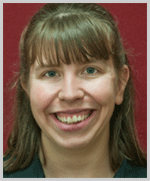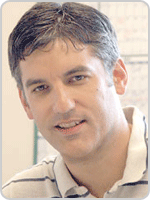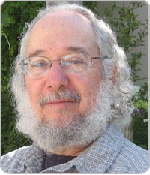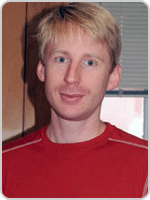- Details
-
Category: Department News
-
Published: Monday, November 17 2014 10:53
Gretchen Campbell, Chirstopher Monroe, Edward Redish and Ian Spielman have won major awards from the American Physical Society (APS), the nation's largest professional organization of physicists. The prizes are awarded annually to honor the world's leading physicists.

Gretchen Campbell, Adjunct Assistant Professor, won the Maria Goeppert Mayer Award. She was chosen for “her pioneering contributions to the study of superfluidity in atomic-gas Bose-Einstein condensates, realizing atomic analogs to superconducting and superfluid liquid circuitry, including the use of weak links to create the first closed-circuit atomtronic devices.”
Campbell was an NRC Postdoctoral Fellow in Jun Ye's group at NIST, Boulder. She joined the Joint Quantum Institute (JQI) as a Fellow in 2009 and currently runs two laboratories: one at NIST and one at UMD. At NIST, her lab studies superfluidity in an atomtronic circuit. Atomtronics is an emerging technology whereby atoms play the role of information carriers, analogous to electrons in conventional circuitry. Campbell’s lab has led the research progress in this area.

Christopher Monroe, Bice Zorn Professor of Physics, won the Arthur L. Schawlow Prize in Laser Science. He was chosen for "pioneering research in the use of lasers to realize the elements of quantum information processing with trapped atomic ions, including demonstrations of remote entanglement for quantum communication protocols and use of frequency combs for high-speed qubit manipulation and entanglement.”
Monroe's career in ion traps began when he was an NRC Postdoctoral Fellow in Dave Wineland’s group at NIST, Boulder. In 2007 he joined JQI, where he currently has five operational ion trapping laboratories. His labs explore a range of physics and ion trap technology. Notably, Monroe’s research group has been a leader in quantum simulations using trapped atomic ions, as well as the development of a modular, scalable architecture for quantum computing.

Edward (Joe) Redish, Professor and Distinguished Scholar-Teacher, won the Excellence in Physics Education Award. He was recognized for his "leadership in the use of computers in physics education, applying cognitive research to improve student learning and critical thinking skills, tailoring physics instruction for nonphysicists, and guiding the field of physics education research through a period of significant growth."
For the past 20 years Redish's research effort has focused on physics education with an emphasis on the role of student expectations and understanding the kinds of difficulties physics students have with problem solving from introductory to upper division physics. He is a fellow of the American Physical Society, the AAAS, and the Washington Academy of Science and has received awards for his work in education from the Washington Academy of Science, the Maryland Association for Higher Education, Dickinson College, Vanderbilt University, and the Robert A. Millikan Medal from the AAPT.

Ian Spielman, Adjunct Professor, won the I.I. Rabi Prize in Atomic, Molecular & Optical Physics. He was recongized for "the development of quantum simulations using ultra-cold atoms, creation of synthetic electromagnetic fields, demonstration of synthetic spinorbit coupling, and applications to studying new physical systems."
After an NRC (National Research Council) Postdoctdoctoral fellowship in NISTs Laser Cooling and Trapping group he was hired a physicist in that same group. He currently operates three research laboratories, one on UMDs campus in College Park and two at NIST, Gaithersburg. Spielman’s group has spearheaded innovative, versatile techniques that make neutral ultracold atoms behave unexpectedly, in some cases like charged electrons.
For a full listing of 2014 APS Award Recipients visit: http://www.aps.org/programs/honors/new-recipients.cfm



